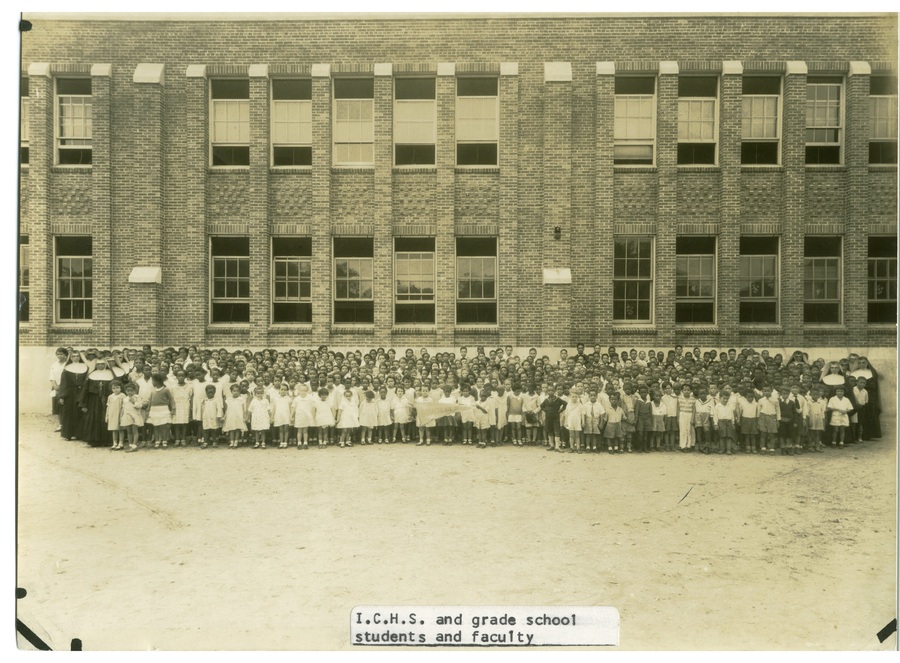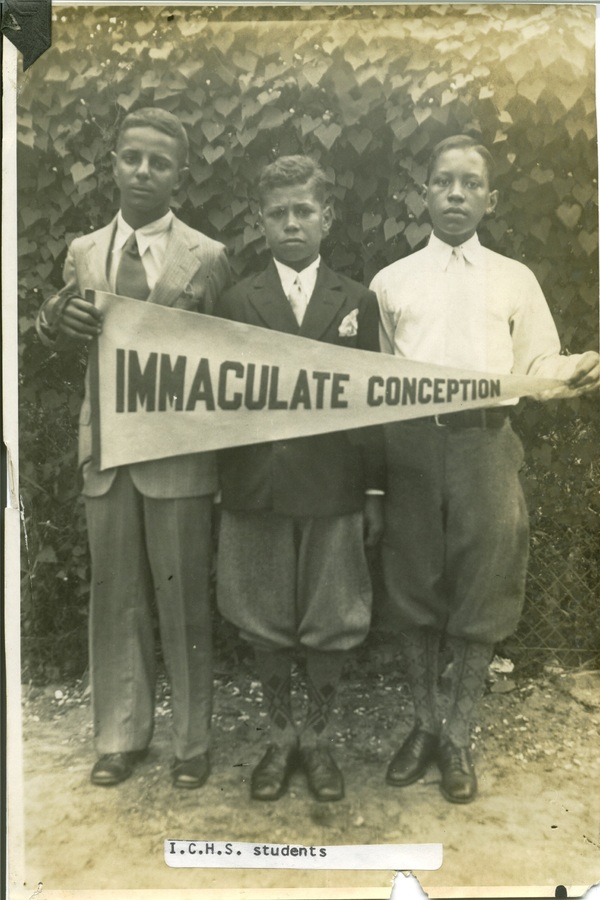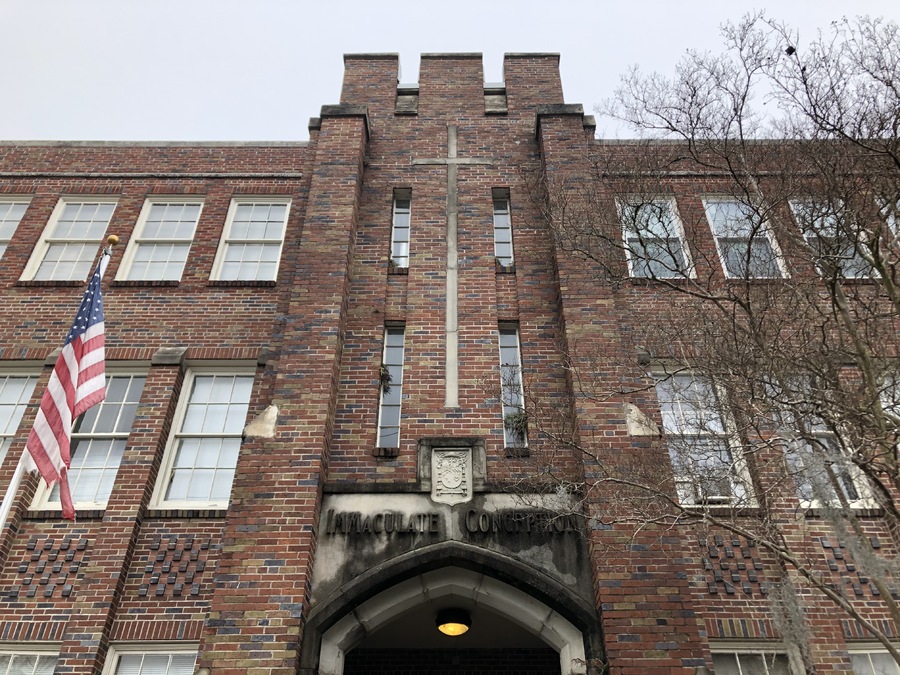Immaculate Conception School, 200 Coming Street

200 Coming Street is the site of one of Charleston's many brick structures. Nevertheless, several crosses embedded into the building's facade quickly give away the building's owners and give a hint to its past.
200 Coming Street is the site of one of Charleston's many brick structures. Nevertheless, several crosses embedded into the building's facade quickly give away the building's owners and give a hint to its past. Here sits Immaculate Conception School, a high school built for African Americans, run by the Roman Catholic Diocese of Charleston. Immaculate Conception school was established in 1916 and staffed by the Oblate Sisters of Providence, the first successful African American holy order in the United States. This address was the site of one of Charleston’s most prestigious educational institutions. In order to understand how the building got to this point, one must travel back in time to 1916.
By 1916, the Roman Catholic Diocese of Charleston had built a makeshift yet successful group of facilities dedicated to the education of the city. Nearby, at 65 Society Street, stood St. Peter's School, a converted church. In 1904, nuns opened a second school for African Americans in Charleston's second African American Catholic Church, Immaculate Conception Church on Sheppard Street. In the church, the attendance started with 50 students and rose to 133. While makeshift, the facilities added the growing need to educate the youth of Charleston, South Carolina.
Since 1917, the Oblate Sisters of Providence, ran the school. The order, founded in 1828, began in Baltimore, Maryland and is the first permanent community of Roman Catholic sisters of African descent in the United State. Initially, the Dioceses was unsure about bringing the order to Charleston. The Oblate Sisters of Providence faced multiple and intersecting patterns of discrimination including strong anti-Black and anti-Catholic sentiments. Despite the prejudice they faced, the Oblate became an order of highly educated teachers specializing in the education of African Americans.
The Sisters' first year proved to be successful as enrollment in both schools significantly increased. Even students with Protestant parents continued to enroll their children despite having to pay tuition (around $25 per student per month), buy school books and learn Catholic doctrines. Under the leadership of the Oblates, Immaculate Conception School reached 240 students while St. Peter's taught up to 184 pupils.
Due to the success it became clear that the Diocese needed a new school. In 1924, the Diocese of Charleston, faculty, parents, and students began to fundraise. The Bishop asked the Parent Teacher Association to raise $5,000 for a new school building, but the organization was only able to raise about $3,000. Around the same time, other Catholic organizations and donors such as the Commissions for Catholic Missions among Colored, the American Board of Catholic Missions, and Saint Katharine Drexel donated funds for the completion of the school. Unfortunately, Bishop William T. Russell passed away in the midst of the fundraising campaign and the plans for the new school were temporarily abandoned.
Charleston's next Bishop, Emmet M. Walsh made it a priority to finish the work Russell started. In 1927, the plans for the new school were put back into motion. The school finished construction in 1930. The building contained fourteen classrooms: ten for grammar school, and the rest for high school. The completion of the new school allowed the Diocese to combine the student bodies of Old Immaculate Conception School and St. Peter's School and close the declining schools. After finishing its last classes, St. Peter’s would close in 1936. With their efforts concentrated on one school, the Oblate Sisters of Providence were able to invest more in teaching high school and even college-level classes.
With the new school and the skills of the sisters, Immaculate Conception School at 200 Coming Street became one of Charleston's most prestigious learning institutions for African Americans. Next to the Avery, Immaculate Conception became the best location for anyone within the city's African American community wanting an advanced education curriculum. Yet unintentionally this heightened sense of prestige came with a disadvantage. Due to the high tuition, not everyone within Charleston's African American population was able to attend Immaculate Conception School. This contributed to the class divide within Charleston's Black population. Charleston's middle- to upper-class African American families were able to afford to send their children to the private Immaculate Conception. At the same time, those who could not were forced to use schools with less funding and no advanced courses.
Despite the school’s academic prowess, the building itself eventually fell under poor maintenance. Instead of fixing the school through expensive repairs, the Diocese of Charleston pursued a different path. By the start of the 1970s, the need for a separate school for African Americans was gone. Starting in September 1963, Charleston County’s school system slowly began to desegregate. Bishop Ernest L. Unterkoefler chose to desegregate Charleston’s Catholic schools rather than continue schools such as Immaculate Conception. Immaculate Conception’s grammar school remained open until around 1972 while the high school was integrated with Bishop England High School, which had formerly been open only to white students, in 1968. Immaculate Conception School closed as an educational institution in 1973.
Images




